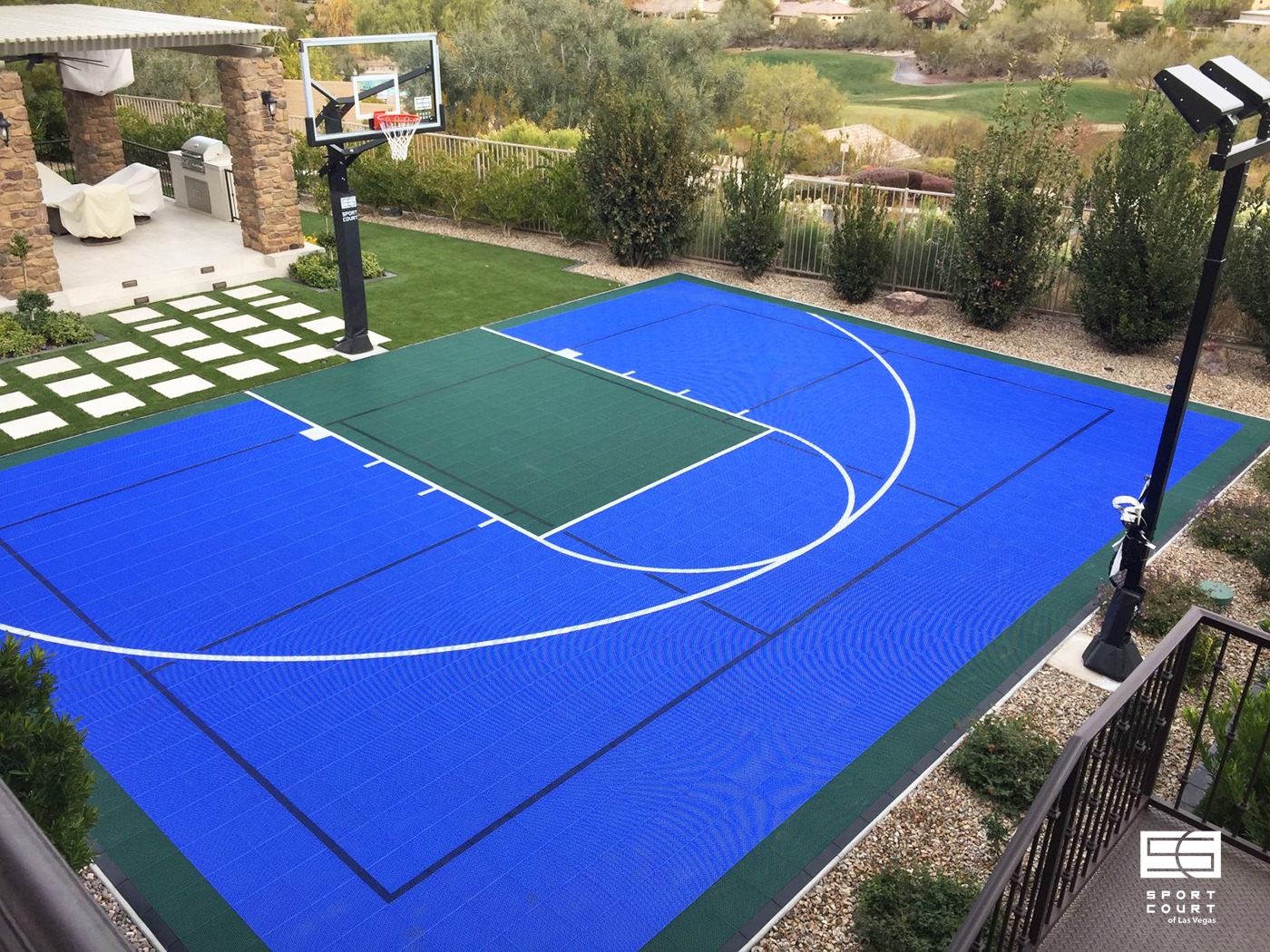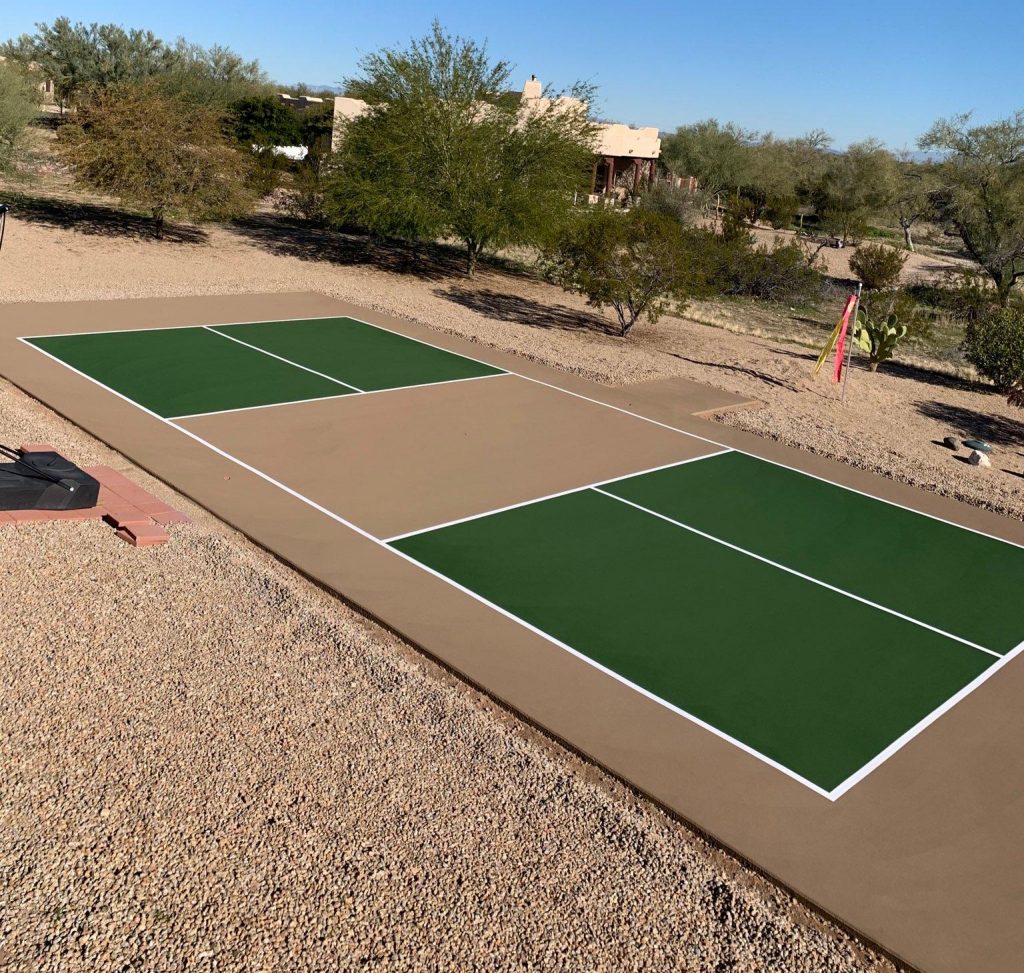The cost of installing a pickleball court can vary depending on factors such as location, court size, materials, and additional amenities. However, the acrylic “hard court” system tends to be the most cost-effective option, followed by the standard and premium ProCushion systems.
Factors Affecting Pickleball Court Installation Costs
Factors Affecting Pickleball Court Installation Costs
When it comes to installing a pickleball court, several factors can influence the overall cost. Understanding these factors is essential for budgeting and planning purposes. Here are the key factors that can affect pickleball court installation costs:
1.
Location And Site Preparation
The location of your pickleball court plays a vital role in determining the cost. Factors like accessibility, existing terrain, and site preparation requirements can impact the overall expenses. For instance, if the site is on uneven terrain, additional grading work may be necessary to create a level surface, adding to the cost. Similarly, site accessibility and ease of construction can affect labor expenses and equipment rental charges.
2.
Court Size And Dimensions
The size and dimensions of the pickleball court are significant cost determinants. Larger court sizes will require more material and labor, increasing the installation expenses. The standard size of a pickleball court is 20 feet wide by 44 feet long for singles play and 34 feet wide by 64 feet long for doubles play. However, custom court sizes may incur additional charges.
3.
Surface Material And Quality
The choice of surface material and its quality significantly impacts the cost of installation. There are various surface options available, including concrete, asphalt, and synthetic materials. Concrete and asphalt tend to be more economical choices, while synthetic surfaces offer better durability and performance but at a higher price point. Additionally, the quality of the chosen material, such as the thickness of the asphalt or the type of synthetic coating, can influence costs.
4.
Accessories And Additional Features
The inclusion of accessories and additional features can add to the overall installation cost. These may include items like fencing, lighting, wind barriers, and seating areas. While these features enhance the playing experience and add aesthetic value, they come with their own expenses. It’s important to factor in these costs when planning your pickleball court installation.
In conclusion, several factors contribute to the overall cost of installing a pickleball court. Location and site preparation, court size and dimensions, surface material and quality, as well as the inclusion of accessories and additional features, all play a role in determining the final expenses. By considering these factors, you can make informed decisions about your pickleball court installation project and ensure it stays within your budget.
Cost Breakdown Of Pickleball Court Installation
Installing a pickleball court can be both exciting and beneficial for any avid player. However, understanding the cost breakdown of this installation is crucial to ensure that you stay within budget. In this section, we will discuss the various expenses involved in setting up a pickleball court.
Site Preparation Expenses
Before the actual installation, proper site preparation is necessary to ensure a stable and level playing surface. Site preparation expenses typically include:
- Clearing and leveling the area
- Excavation and grading
- Removing any obstacles or debris
Site preparation costs can vary depending on the size of the area and its current condition. It’s recommended to hire professional contractors experienced in sports court installation to ensure accurate preparation.
Material Costs
Surface
Choosing the right surface material for your pickleball court is essential to achieve optimal playing conditions. There are various options available, such as concrete, asphalt, or acrylic.
| Surface Material | Average Cost per Square Foot |
|---|---|
| Concrete | $4 – $6 |
| Asphalt | $4 – $7 |
| Acrylic | $6 – $10 |
Lines and Markings
Properly marked lines are essential for accurate gameplay. The cost of lines and markings will vary depending on the material used and the size of the court. On average, expect to spend around $300 – $500 for lines and markings.
Labor And Installation Fees
Hiring professional installers is highly recommended to ensure a quality pickleball court. Labor and installation fees usually include:
- Preparation work, including site leveling and excavation
- Surface installation
- Line and marking application
- Court finishing and cleanup
The cost of labor and installation fees can vary depending on the size of the court and the complexity of the project. On average, expect to spend anywhere between $8,000 – $15,000 for labor and installation fees.
Accessory And Equipment Expenses
Aside from the court itself, there are additional accessories and equipment that you may need to consider:
- Pickleball nets and posts ($250 – $500)
- Paddles and balls ($50 – $100+)
- Seating and shading options, if desired
Remember to factor in these accessory and equipment expenses when budgeting for your pickleball court installation.
Comparing Different Pickleball Court Surface Options
When it comes to installing a pickleball court, one of the most important decisions you’ll need to make is choosing the right surface. The surface you choose can impact the game play, performance, and overall maintenance of your court. In this article, we’ll compare three different pickleball court surface options: Acrylic hard court system, Standard ProCushion system, and Premium ProCushion system.
Acrylic Hard Court System
The acrylic hard court system is the most affordable option when it comes to pickleball court surfaces. It consists of a coating of acrylic resurfacer, followed by layers of acrylic paint. This system provides a durable and smooth playing surface that is suitable for recreational players who are looking for a cost-effective solution.
Standard Procushion System
The Standard ProCushion system offers a step up in terms of performance and comfort. It is comprised of a cushioned layer made of rubberized material that provides shock absorption and reduces joint stress for players. This system is ideal for players who want a more forgiving surface that minimizes the risk of injuries and fatigue.
Premium Procushion System
The Premium ProCushion system is the top-of-the-line option when it comes to pickleball court surfaces. It offers the highest level of performance, comfort, and durability. This system includes additional layers of cushioning and specialized coatings to optimize ball bounce, player grip, and overall court playability. It is the preferred surface for professional players and tournaments.
When considering the cost of installing a pickleball court, it’s important to factor in both the initial installation cost as well as the long-term maintenance requirements. While the acrylic hard court system has a lower upfront cost, it may require more frequent resurfacing compared to the ProCushion systems. Therefore, it’s essential to evaluate your budget and requirements before making a decision.
In conclusion, each pickleball court surface option offers its own advantages and cost considerations. The acrylic hard court system is the most budget-friendly option, the Standard ProCushion system provides improved performance and comfort, and the Premium ProCushion system offers the ultimate playing experience. Consider your budget, playing level, and long-term maintenance needs to determine the right surface for your pickleball court.
Diy Vs Professional Installation: Pros And Cons
Diy Installation: Advantages And Drawbacks
Installing a pickleball court on your own can be a tempting option due to the potential cost savings. However, it is important to consider the advantages and drawbacks of DIY installation before making a decision.
Advantages
| 1. Cost | One of the primary advantages of DIY installation is the potential cost savings. By taking on the task yourself, you can eliminate the expenses associated with hiring professionals. |
| 2. Flexibility | DIY installation allows you to have full control over the design and layout of your pickleball court. You can customize it to fit your specific needs and preferences. |
| 3. Learning Experience | Taking on a DIY project can be a great learning experience. It allows you to gain knowledge and skills that can be applied to future projects. |
Drawbacks
- 1. Time-consuming: Installing a pickleball court requires significant time, effort, and careful planning. It can be a time-consuming process, especially if you have little to no experience in construction or landscaping.
- 2. Lack of Expertise: DIY installation may lack the level of expertise and knowledge that professionals bring to the table. This can potentially lead to mistakes or subpar results.
- 3. Physical Demands: Building a pickleball court involves manual labor and physical exertion. It requires digging, leveling, and the use of heavy machinery or tools. It may not be suitable for individuals with physical limitations.
Benefits Of Hiring Professionals For Installation
While DIY installation has its advantages, there are several benefits to hiring professionals for the job:
- 1. Expertise and Experience: Professional installers have the necessary expertise and experience to ensure a high-quality and durable pickleball court. They have the knowledge to handle all aspects of the installation process efficiently.
- 2. Time and Convenience: Hiring professionals saves you precious time and effort. They will take care of all the necessary steps, from site preparation to court construction, allowing you to focus on other tasks or activities.
- 3. Quality Materials and Equipment: Professionals have access to quality materials and equipment, ensuring that your pickleball court is built to last. They can recommend the best materials that fit your budget and provide long-term benefits.
- 4. Guarantees and Warranties: Reputable professionals often offer guarantees and warranties for their work. This provides peace of mind, knowing that any issues that may arise after installation will be promptly addressed.
Tips For Saving Money On Pickleball Court Installation
Finding Cost-effective Material Suppliers
One of the key factors in saving money on pickleball court installation is finding cost-effective material suppliers. Instead of simply opting for the first supplier you come across, take the time to research and compare prices from different suppliers. Look for suppliers who offer competitive rates without compromising on the quality of the materials.
Negotiating Labor And Installation Fees
When it comes to the installation process, negotiating labor and installation fees can significantly reduce the overall cost. It’s essential to get quotes from multiple contractors and compare their pricing structures. Use this information as leverage when negotiating with your preferred contractor. Consider bundling other services, such as court maintenance, to potentially secure a better deal.
Avoiding Unnecessary Accessories Or Features
Many pickleball enthusiasts sometimes go overboard with accessories and features, ultimately increasing their installation costs. To keep costs down, it is crucial to resist the temptation and only opt for necessary items. Avoid unnecessary accessories such as fancy fencing, complex lighting systems, or high-end equipment. Instead, focus on the essentials like a sturdy court surface, proper line markings, and comfortable seating options.
By following these tips, you can save a significant amount of money on pickleball court installation without compromising on quality. Finding a cost-effective material supplier, negotiating labor and installation fees, and avoiding unnecessary accessories or features are all effective strategies to achieve your dream pickleball court while staying within your budget.

Credit: www.sportcourtlasvegas.com
Frequently Asked Questions On How Much Does It Cost To Install A Pickleball Court
What Is The Cheapest Way To Make A Pickleball Court?
The cheapest way to make a pickleball court is to use an acrylic “hard court” system, followed by standard and premium ProCushion systems.
Can I Turn My Driveway Into A Pickleball Court?
Yes, you can turn your driveway into a pickleball court. It is a cost-effective option for creating a playing space at home. DIY instructions are available to guide you through the installation process.
How Do You Install A Pickleball Court At Home?
To install a pickleball court at home, follow these steps: 1. Determine the size and location of the court. 2. Prepare the site by clearing the area and leveling the ground. 3. Install a border around the court using boards or concrete curbs.
4. Lay down a base layer of compactable gravel or crushed stone. 5. Finally, cover the base with a layer of acrylic or cushioned pickleball court surfacing. Note: Consulting a professional or referring to DIY guidelines can provide more detailed instructions based on your specific needs.
How Much Room Do You Need Behind A Pickleball Court?
You need a minimum of 10 feet of space behind a pickleball court.
Conclusion
Based on the factors discussed the cost of installing a pickleball court can vary depending on various factors such as the type of surface, size of the court, and any additional amenities. On average, you can expect to spend anywhere from $10,000 to $50,000.
It is important to consider your budget and the specific needs of your project when planning for the cost of installing a pickleball court.

